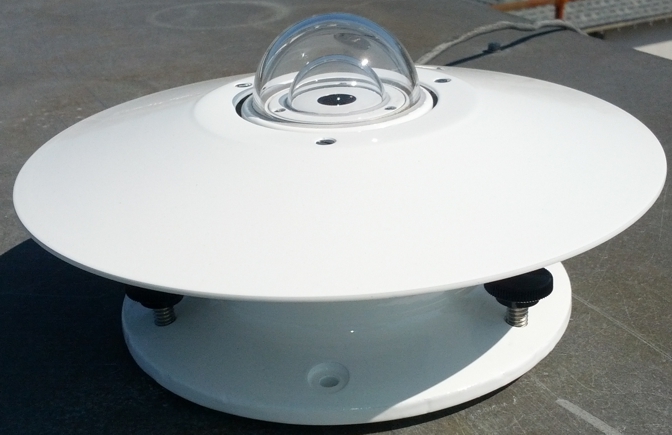Standard Precision Pyranometer
Model SPP
A pyranometer is used to measure the energy from the sun. When leveled in the horizontal plane, this is called the Global Shortwave Irradiance (GLOBAL) and when positioned in a plane of a PV Array, it is called the Total Irradiance in the plane of array (TPA). Inverted, a pyranometer is used to measure the Reflected or Albedo Irradiance (ALBEDO). A pyranometer can also be shaded from the direct beam of the sun to measure the Diffuse Shortwave Irradiance (DIFFUSE).
Uses:
Based on the design of the distinguished PSP Pyranometer, the new SPP has faster response time, a reduced nighttime thermal offset, an improved cosine response and a better temperature dependence. This makes the SPP the ideal instrument for high quality network measurements and as a transfer standard for calibration of other pyranometers. A thermistor is included for measuring instrument temperature.
*Uncertainty:
Recently, there has been much discussion on “uncertainty” and how it pertains to solar measurements. The RSS of the 9060 Secondary Standard specifications results in an uncertainty of approximately 3.5%. The typical uncertainty of Eppley’s factory calibrations are less than 1%. The stated uncertainty of the WRR is 0.4%. Evidence from comparisons of SPP measurements to component sum derived values (using an AHF and 8-48) show the SPP is capable of hourly averages better than 2% and daily averages better than 1%.
CLICK HERE to download Specifications [PDF]
| Application | Working Standard or Network Measurements |
| Classification | Secondary Standard / High Quality |
| Traceability | World Radiation Reference (WRR) |
| Spectral Range | 295-2800 nm |
| Output | 0-10 mV analog |
| Sensitivity | approx. 8 μV / Wm-2 |
| Impedance | approx. 700 Ω |
| 95% Response Time | 5 s |
| Zero Offset a) | 5 Wm-2 |
| Zero Offset b) | 2 Wm-2 |
| Non-Stability | 0.5% |
| Non-Linearity | 0.5% |
| Directional Response | 10 Wm-2 |
| Spectral Selectivity | 2% |
| Operating Temperature | -50°C to +80°C |
| Temperature Response | 0.5% from -30°C to +50°C |
| Tilt Response | 0.5% |
| Calibration Uncertainty* | < 1% |
| Measurement Uncertainty* | |
| Single Point | < 10 Wm-2 |
| Hourly Average | approx. 2% |
| Daily Average | approx. 1% |



